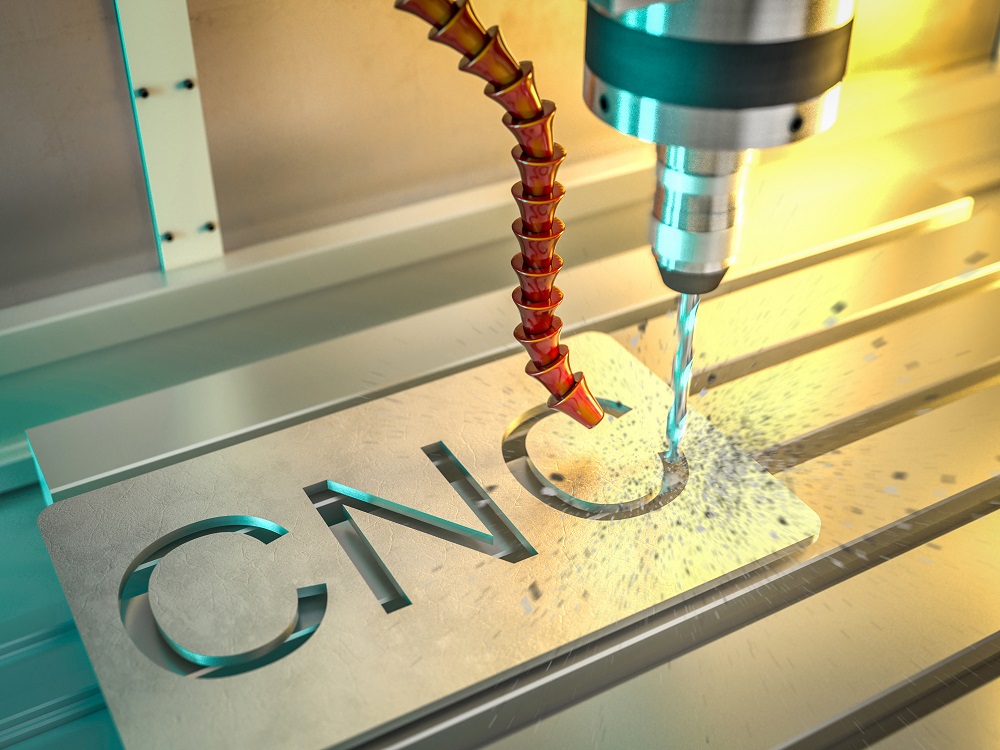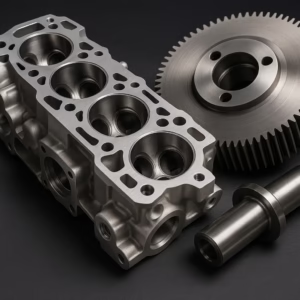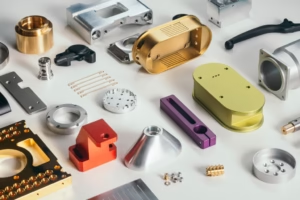The Essential Guide to CNC-Turned Parts Manufacturers

Blog Details In the manufacturing realm, CNC-turned parts play a pivotal role, and understanding the nuances of the manufacturers behind them is crucial. This article is a comprehensive guide to navigating the world of CNC-turned-part manufacturers, shedding light on their processes, technologies, quality control measures, industry trends, and prospects. The Craftsmanship Behind CNC Turning CNC turning, as a fundamental process in modern manufacturing, embodies a meticulous blend of craftsmanship and technological precision. At its core, CNC turning involves the removal of material from a workpiece to achieve the desired shape and dimensions. What distinguishes CNC from conventional methods is the utilization of computer numerical control (CNC) technology, which enables unparalleled accuracy and repeatability in part production. Precision Engineering Central to the craftsmanship of CNC turning is precision engineering. Manufacturers meticulously program CNC lathes, the primary machines used in turning operations, to execute precise tool movements. These movements are orchestrated to remove material from the workpiece in a controlled manner, resulting in components with tight tolerances and impeccable surface finishes. The ability to achieve micron-level precision is a hallmark of CNC turning, making it indispensable in industries where accuracy is paramount, such as aerospace, automotive, and medical device manufacturing. Material Mastery Another facet of CNC-turning craftsmanship lies in material mastery. CNC-turned parts are crafted from a wide array of materials, including metals like aluminum, steel, and titanium, as well as plastics such as nylon and polycarbonate. Each material presents challenges and considerations, from tool selection to cutting speeds and feeds. Experienced CNC machinists possess an intimate understanding of material properties and behavior, enabling them to optimize cutting parameters for maximum efficiency and quality. Tooling Expertise Tooling expertise is another crucial aspect of CNC-turning craftsmanship. Selecting cutting tools, inserts, and holders is pivotal in achieving optimal machining performance. Factors such as tool geometry, coating technology, and substrate material influence tool life, chip control, and surface finish. Moreover, the ability to strategically apply various cutting strategies, such as roughing, finishing, and profiling, requires a deep understanding of tooling principles and machining dynamics. Process Optimization Craftsmanship in CNC turning extends beyond individual machining operations to encompass process optimization. Manufacturers continuously refine their processes to minimize cycle times, reduce waste, and maximize productivity. This involves optimizing cutting parameters, such as spindle speed, feed rate, and depth of cut, to strike a balance between material removal rates and tool life. Additionally, leveraging advanced CAM (Computer-Aided Manufacturing) software allows for generating optimized tool paths, further enhancing efficiency and precision. Continuous Improvement Ultimately, the craftsmanship behind CNC turning is characterized by a commitment to continuous improvement. Manufacturers invest in training and skill development to keep pace with technological advancements and industry best practices. By embracing innovation and refining their craft, CNC machinists push the boundaries of what’s possible. Delivering precision-engineered components that drive progress across many industries. Exploring CNC Turning Technology and Equipment CNC turning technology and equipment constitute the backbone of modern manufacturing, offering unparalleled precision, versatility, and efficiency. This section delves into the intricacies of CNC-turning technology, highlighting the evolution of equipment and the innovative features that drive productivity and quality in the industry. Evolution of CNC Turning Technology The evolution of CNC turning technology has been marked by significant advancements in machine design, control systems, and cutting tool technology. Early CNC lathes were characterized by basic functionality and limited capabilities, but over the years, rapid technological progress has transformed the landscape of turning operations. Multi-Axis Machining One of the most notable advancements in CNC turning technology is adopting multi-axis machining capabilities. Traditional lathes can perform operations along two axes (X and Z). Still, modern CNC lathes can feature live tooling and additional axes (such as Y, B, and C), enabling complex machining operations in a single setup. Multi-axis machining offers greater flexibility, allowing manufacturers to produce intricate geometries and reduce the need for secondary operations. Swiss-style CNC Lathes Swiss-style CNC lathes have revolutionized the production of small, high-precision components. These machines excel at machining long, slender parts with tight tolerances, such as medical implants, aerospace components, and electronic connectors. Swiss-style lathes feature a sliding headstock and guide bushing, which provide enhanced support and stability during machining. Additionally, integrating advanced control systems and servo motors ensures precise synchronization of tool movements, resulting in superior surface finish and dimensional accuracy. Automatic Bar Feeders Automatic bar feeders are integral to CNC turning equipment, streamlining production and maximizing machine uptime. These devices automatically load raw material, typically round bars or tubes, into the lathe, allowing for continuous and unattended operation. Automatic bar feeders come in various configurations, including pneumatic, hydrodynamic, and servo-driven systems, each offering unique advantages in speed, reliability, and material handling capabilities. Live Tooling and Sub-Spindles Live tooling and sub-spindles enhance the versatility of CNC turning machines, enabling the performance of milling, drilling, and tapping operations in addition to traditional turning. Live tooling units are equipped with rotating tool holders that can engage the workpiece at various angles, expanding the range of machining capabilities. Sub-spindles, on the other hand, provide the ability to perform secondary operations on the reverse side of the workpiece, eliminating the need for manual intervention and reducing cycle times. Integration of Automation and Robotics The integration of automation and robotics has further transformed CNC turning operations, enabling lights-out manufacturing and enhancing productivity. Automated loading and unloading systems, robotic arms, and vision systems facilitate seamless material handling and part inspection. Additionally, collaborative robots (cobots) are increasingly deployed alongside human operators to perform repetitive tasks and enhance overall efficiency on the shop floor. Ensuring Quality in CNC-Turned Parts at Prototek Quality assurance is a cornerstone at Prototek in CNC-turned-part manufacturing, as precision and reliability are paramount in meeting customer expectations and industry standards. This section delves into the various measures and techniques Prototek employs to uphold stringent quality standards throughout production. Dimensional Inspection Dimensional inspection is the bedrock of quality assurance at Prototek in CNC-turned parts manufacturing. Manufacturers utilize various precision measurement tools, such as coordinate measuring machines (CMMs), calipers, micrometers, and optical comparators,



